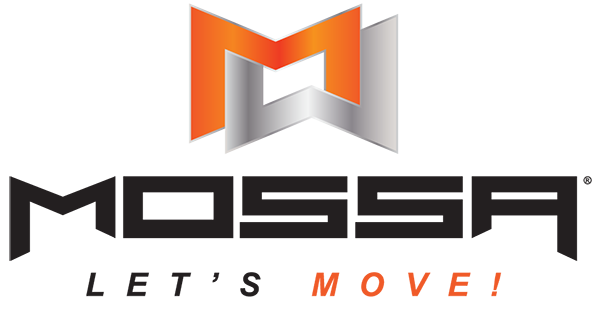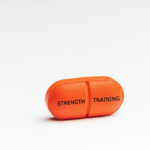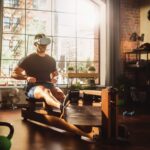Hands up if you know a strong brawny dude who will bench press twice his body weight, but then hurt himself swinging a golf club. Or the weight room aficionado, confident with a barbell, who hurts herself doing the spring gardening. And the would-be weekend decorator who, visiting IKEA for the first time, realizes the hard way he is not IKEA strong (that is, having the ability to move heavy, awkward boxes onto a trolly, then into a car, then building the furniture at home without pain or soreness the next day).
How Do We Define 3D Strong?
The competence to perform these life tasks and athletic functions with ease and without pain, discomfort, or injury, is being three-dimensionally strong, or 3D strong, as opposed to 2D strong.
Davis’s Law and Building Your Physical Scaffolding
To clearly appreciate this phenomenon, it helps to understand a term used in anatomy and physiology called Davis’s Law. This law, in its simplest terms, describes how our soft tissues (ligaments, tendons, and fascia) strengthen and build along the lines of demand. The body creates a type of physical scaffolding that is at once strong and resilient and yet pliable and flexible. This creates a type of “play” in our bodies, akin to buildings that are earthquake-proof. Buildings are not made to be earthquake-proof by being stiff and sturdy; they are earthquake-proof because they can move and be moved without breaking.
Let’s take this back to the weight room. Strong brawny dude is super tough when he is lying on a bench pushing heavy loads above his chest. This is a very linear movement, up and down in 2D. His physical scaffolding is being built along the lines of stress – a straight line pushing up. When strong brawny dude hits the golf course for the first time in a while, he is suddenly required to be 3D strong. Golf has a massive rotational component from head to toe. So, when he thwacks the ball, he is asking his physical scaffolding to tolerate fast, end range rotation. It’s the earthquake that his building wasn’t built for.
Bottom line, our body adapts to the way it is used. Exposure to 3D movement makes us 3D strong, and failure to expose ourselves to 3D movement…well, you can smell what I’m cooking.
Loaded Movement Training = Training for Real Life!
Don’t get me wrong; time in the weight training room has many inherent benefits as we become muscle strong. However, when we combine an external load (weight) with three-dimensional movements that mimic real-life lifting, carrying, pushing, swinging, rotating, shoving, pulling, shifting, and shoveling patterns, we are doing what the Institute of Motion (IoM) coined as Loaded Movement Training. We employ this type of exercise to become 3D strong… or as we like to say, movement strong. And when we are movement strong our bodies are more capable, more resilient, and “unbreakable.”
Think about these words: capable, resilient, and unbreakable. Capable is about what your body can do, rather than what it looks like. Don’t you want to feel capable in your body, at a bare minimum? Being capable throws open doors to explore and participate in all that life offers, like having a physical “can-do” attitude. Resilient is the ability to withstand shock, to not be easily damaged, to bounce back. Being resilient means that we can withstand or tolerate the things we ask our bodies to do. Unbreakable means having an “injury-proof” body.
How Do We Build More Resilient Bodies?
MOSSA is committed to building Loaded Movement Training into all programs that use a barbell, dumbbells, and plates, like Group Power, Group Active and Group Core; but the ultimate tool to make us 3D strong is the ViPR Pro, a unique training device widely used by athletes in all sports to help them build unbreakable bodies. The ViPR Pro is a weighted tube with various handles and openings so that it can be moved through space with a tremendous amount of variability and functions: lift, carry, push, swing, rotate, shove, pull, shift, and shovel. Did you notice anything? These are the movements that we do in our everyday lives!
Two Programs That Leverage Loaded Movement Training
That’s why we at MOSSA have created two programs that use the ViPR Pro:
- MOVE30®, which is a great place to get introduced to Loaded Movement Training, focusing more on building real world strength
- 3D30®, a program that shifts more into the performance realms and caters to individuals who already have levels of conditioning but want to have a resilient edge
If you told me I was allowed only one training tool, I’d choose the ViPR Pro every time. Likewise, if I may recommend a single tool to you, to make an investment in your physical self, choose the ViPR. I have watched countless participants go from stiff, rigid movers to graceful, competent, skillful movers. And the change isn’t just physical – it’s psychological, with an increase in both confidence and willingness.
Building An Unbreakable Body
The bottom line is this: we build resilient bodies, brick by brick, or movement by movement. Our overused sedentary postures combined with a lack of three-dimensional, loaded exercises means that our bodies are not as resilient as they could be. Our body adapts to the way it is used. Building an unbreakable body is possible. But it takes effort. And that effort is what will allow all of us to easily go from the weight room to the garden to the golf course to the earthquake of an IKEA showroom, enjoying an active life to the fullest.



 More than Muscles: Benefits of Strength Training
More than Muscles: Benefits of Strength Training New Member Onboarding: Over-Welcoming or Overwhelming?
New Member Onboarding: Over-Welcoming or Overwhelming? Team vs. Technology and the Future of Fitness
Team vs. Technology and the Future of Fitness Setting Goals for Group Fitness
Setting Goals for Group Fitness Does Exercise Have to be Boring and Bitter?
Does Exercise Have to be Boring and Bitter?